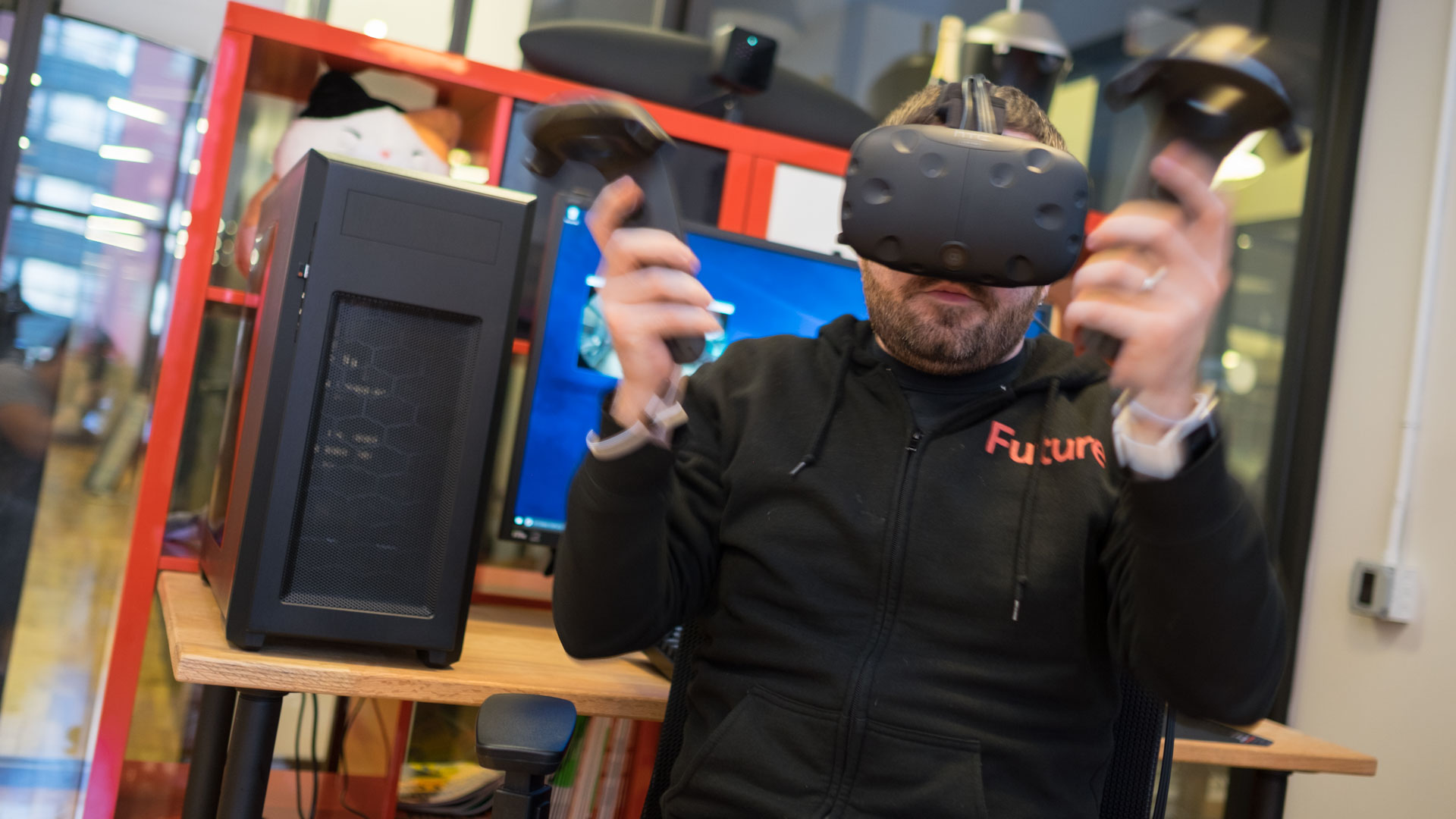Nvidia's new VR display might make motion sickness a thing of the past
So many hertz, zero hurls

Just as the HTC Vive, Oculus Rift and PlayStation VR usher in a new era of virtual reality, work is already being done to improve upon the technology that takes us to far-out worlds.
Nvidia, for one, is looking to take that tech bounds rather than steps.
The computing company unveiled a prototype display during its GPU Technology Conference this week that aims to reduce latency and persistence - two thorns in the side of VR - to zero.
High latency (the lag between an input such as a button prompt or motion to its outcome on the screen) and persistence (the time that an image remains displayed between frames of animation) can cause a disconnect in a VR user's brain, as their actions aren't lining up perfectly with their perception.
This disconnect can kill immersion as well as result in motion sickness. With Nvidia's new prototype, these would no longer be issues thanks to a blazing fast refresh rate.
How fast? Well, VR devices like the Rift and Vive already utilize a fairly high refresh rate of 90Hz in order to keep latency (and nausea) low. That said, Nvidia's display cranks that to eleven by offering a refresh rate of 1700Hz.
"Overkill" may be one way of putting it, but watch in this demonstration as the display is intensely rocked back and forth on a rail, but still able to update and refresh the logo's position to stay firmly in the center.
Get daily insight, inspiration and deals in your inbox
Sign up for breaking news, reviews, opinion, top tech deals, and more.
David Luebke, vice president of research at Nvidia, explained the witchcraft on display as "overloading the display and driving it with this kind of novel binary delta-sigma encoder."
We admit that sounds just as arcane, but what it boils down to is the protoype is pushing normal display technology to absurd levels, displaying images at a rate of 1,700 frames per second as opposed to the usual 30 or 60 frames used in video games.
"You could put [a VR display] in a paint shaker, and it would still appear solid," added Luebke, which leads us to wonder what kind of situation would have us more concerned about stable VR gameplay than whatever it is that's shaking us so violently.
Via: Road to VR/YouTube
